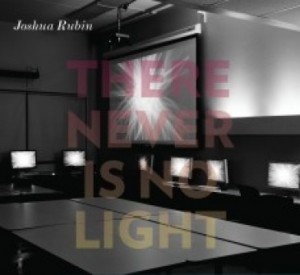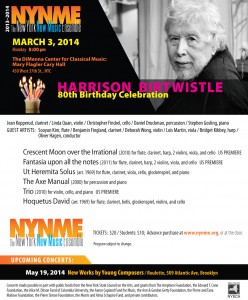By Brian Taylor Goldstein, Esq.
Dear Law and Disorder
We recently had a presenter call us and cancel an engagement “due to inclement weather” because the company’s flight was canceled and they could not arrive the day before the performance as required. The company offered to fly the next day and arrive on the afternoon of the performance. However, the presenter expressed that they were not comfortable with this because they felt the company would not arrive at the theater in time to run a tech with their team and also had the fear that the company would not arrive in time to perform. The engagement contract has a Force Majeure clause that says:
In the event that the performance of any of the covenants of this agreement on the part of the Company or the Presenter shall be prevented by…act of God, illness, physical disability, acts or regulations of public authorities or labor unions, labor difficulties, strike, war, epidemic, interruption or delay of transportation service, or any other causes beyond the reasonable control of such party, such party shall be relieved of its obligations thereunder with respect to the Performance(s) so prevented on account of such cause. If the Performance(s) shall be prevented due to a Force Majeure event, neither the Company nor the Presenter shall be under any obligation to present the Performance at a different time, except that if the Performance(s) shall be prevented for any of the foregoing causes, the Presenter shall use its best efforts to re-engage the Company within a twenty-four (24) month period on the same terms and conditions set forth herein, subject however to Company’s availability…In the event that the performance is cancelled due to Force Majeure on the Artist’s behalf, all deposit monies will be returned to Presenter. In the event that the Presenter cancels the performance for any reason other than those described in the preceding paragraph, then the Presenter is responsible for the full fee.
Do we have to return the deposit since the company was willing to fly in the next day, but Presenter decided to cancel anyway? Can we ask for the full fee? We have not yet spoken to the Presenter, but wanted to be forearmed before we do so we can stand our ground.
“Forearmed” for what? Has the Presenter asked for the deposit back? Are you planning on initiating this “battle”? A contract is a tool, not a weapon to be rattled like a sabre. If you approach this as a “battle”, here’s how it will likely play out:
Presenter: Great to see you at APAP. Thanks for the drinks. I’m afraid we’re going to need the deposit back because the artists couldn’t get here due to weather. The force majeur was theirs.
Manager: But they were willing and able to come the next day. You didn’t want to take that risk. So, you cancelled. In fact, you owe us the rest of the performance fee. And, thanks for the birthday card. That cat was adorable.
Presenter: It’s industry standard for the deposit to be returned when there is a cancellation due to weather.
Manager: But you cancelled and its industry standard that the artist gets paid if the presenter cancels.
Presenter: The company’s flight was cancelled because of the snow. That’s a force majeur.
Manager: The weather prevented the artist from arriving the day before the concert. They could have arrived on the day of the performance. You didn’t want them, so you cancelled and the contract says if you cancel we get to keep the deposit and you owe the full fee.
Presenter: But that’s not industry standard
Manager: It’s what’s in the contract.
Presenter: We were forced to cancel the performance and refund the tickets, which didn’t sell that well anyway. I just didn’t want to say anything about that earlier because of our good relationship. We can’t take those kinds of losses. We are a non-profit.
Manager: The artist had losses, too. And if you weren’t selling tickets, then you should have told me sooner so I could help with the marketing. If you had marketed better, the show sells itself.
Presenter: No show sells itself. Did I mention we are a non-profit?
Manager: We can’t give the deposit back and the company can’t afford to take a loss on this tour. It’s not their fault it snowed.
Presenter: It’s not our fault either, which is why we need the deposit back.
Manager: I spoke with an attorney and we will have to turn this over to legal counsel if we have to. It not personal.
Presenter: I understand. This isn’t personal on my end either, but we have a free attorney on our board and they will sue you to get our money back…and I won’t ever hire any artist on your roster again.
Manager: Fine
Presenter: Fine
…and scene…
Unless you are dealing with the cancellation of the road tour of “Spiderman”, neither of the parties will…or should…be willing to spend the money, time, and energy necessary to sue each other, so they will just stew over this, avoid each other at conferences, and write nasty things about each other on social platforms.
The point of having an engagement agreement, or any contract, much less as force majeure clause, is to identify problems ahead of time and articulate in advance how disputes will be resolved. In your case, based on the engagement agreement, both parties knew that, in the event of snow or other unforeseeable issues, either could be facing losses they might not be able to recover. A force majeure operates like an “excuse.” It gives each party the right to cancel under certain conditions without having such cancellation become a breach. However, because it isn’t a breach, neither party is going to emerge unscathed. Someone is either going to have lost out-of-pocket costs they can’t recover, or a deposit they can’t get back, or both. However, knowing this, hopefully, allows you to budget and plan for various eventualities.
In this scenario, the phrase “due to Force Majeure on the Artist’s behalf” isn’t really defined. However, a reasonable interpretation is that the cancellation of the artist’s flight constituted a force majeur event on the part of the artists—in other words, it was their flight that was cancelled. The fact that the artists were willing to travel on the day of the performance was a reasonable solution, but it was just as reasonable for the presenter not to want to take that risk. The more important issue is that the engagement agreement requires the presenter to use its “best efforts” to try and re-book the date within the next two years. That’s the first place to start. If you can find a mutually agreeable date, problem solved—you keep the deposit and they presenter pays the balance of the fee after the next performance date. (No, you can’t ask for a higher fee if it’s the same performance!) If you can’t find a date within the next two years, then its reasonable for the artist to keep the deposit, but the presenter not to have to pay the remaining fee. “Reasonable” doesn’t mean that everyone will agree or be happy. “Reasonable” usually means that everyone walks away with less than what they wanted, but more than there were probably entitled to, which, for me, is a much better solution any day than mutually assured self-destruction.
_________________________________________________________________
For additional information and resources on this and other legal and business issues for the performing arts, visit ggartslaw.com
legal and business issues for the performing arts, visit ggartslaw.com
To ask your own question, write to lawanddisorder@musicalamerica.org.
All questions on any topic related to legal and business issues will be welcome. However, please post only general questions or hypotheticals. GG Arts Law reserves the right to alter, edit or, amend questions to focus on specific issues or to avoid names, circumstances, or any information that could be used to identify or embarrass a specific individual or organization. All questions will be posted anonymously.
__________________________________________________________________
THE OFFICIAL DISCLAIMER:
THIS IS NOT LEGAL ADVICE!
The purpose of this blog is to provide general advice and guidance, not legal advice. Please consult with an attorney familiar with your specific circumstances, facts, challenges, medications, psychiatric disorders, past-lives, karmic debt, and anything else that may impact your situation before drawing any conclusions, deciding upon a course of action, sending a nasty email, filing a lawsuit, or doing anything rash!





